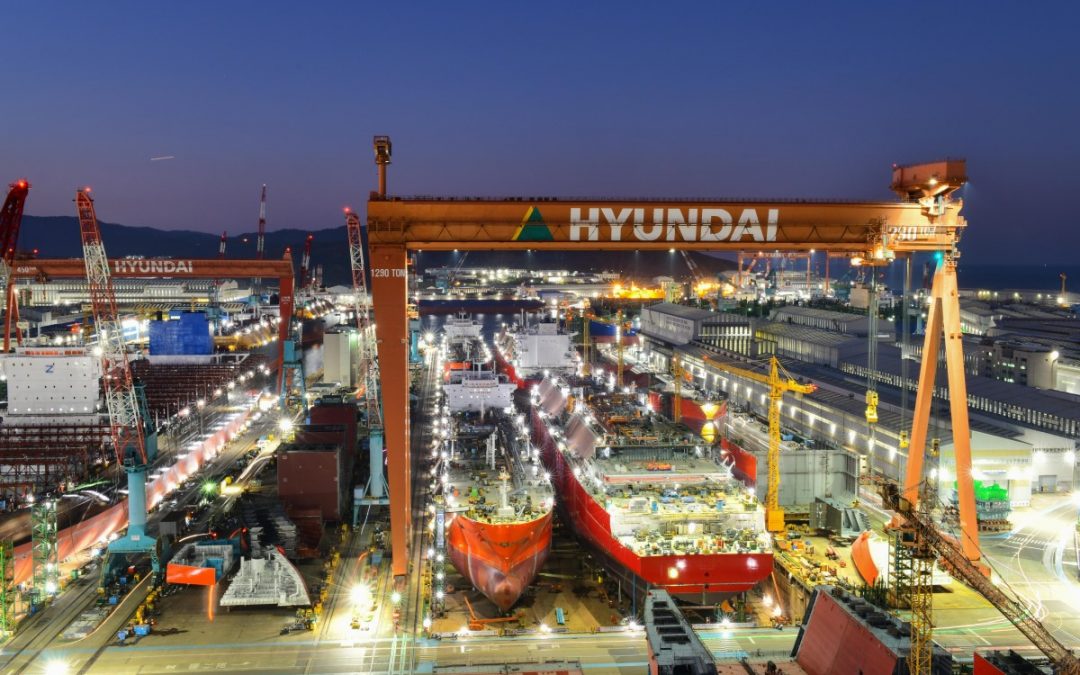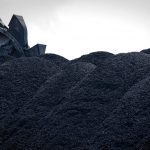South Korea’s three major shipbuilders remain in the red despite hefty new ship orders so far this year, led by high-priced vessels such as liquefied natural gas carriers.
According to industry officials on Monday, the “Big Three,” – Korea Shipbuilding & Offshore Engineering Co. (KSOE), Daewoo Shipbuilding & Marine Engineering Co. and Samsung Heavy Industries Co. – have secured orders worth a combined $30.5 billion in the first seven months of this year, close to 87% of their annual target.
KSOE, the intermediate shipbuilding holding company of Hyundai Heavy Industries Group, won $17.8 billion in new orders in the January-July period, already surpassing its annual goal of $17.44 billion.
Samsung Heavy clinched orders worth $6.3 billion, or 71.6% of its annual target of $8.8 billion, over the same period, while Daewoo Shipbuilding won $6.43 billion, or 72.2% of its target of $8.9 billion.
In the first six months alone, Korean shipyards won 9.94 million compensated gross tons (CGTs) in shipbuilding orders, returning to the world’s top shipbuilder post for the first time in four years, according to market researcher Clarkson Research Service.
China, Korea’s strongest rival, sled to second place with a combined 9.26 million CGTs.
HIGHER STEEL PLATE PRICES, CHEAP ORDERS
However, the Korean shipbuilders are witnessing their profitability worsening, weighed by higher steel plate prices and lower margins from cheap orders in the past.
Last month, KSOE reported that its second-quarter sales rose 7.2% from the first quarter to 4.19 trillion won ($3.2 billion) thanks to increased ship orders, but it remained in the red with 265.1 billion won in operating loss, although its shortfall dwindled from a loss of 396.3 billion won in the prior quarter.
Samsung Heavy saw its sales fall 3.9% on quarter to 1.43 trillion won, while its operating loss widened to 255.8 billion won due to a delay in the production of vessels ordered from Russia in the wake of the Russia-Ukraine war.
The company said its larger loss was also due to 180 billion won in a one-off charge against a price hike in steel plates used for shipbuilding.
Daewoo Shipbuilding has yet to report its second-quarter results but is widely expected to post a loss of at least 75 billion won.
The company’s loss may come worse than market expectations as it suffered from a 51-day strike by its subcontractors.
The walk-out, which ended in late July, is said to have caused about 816.5 billion won in lost production, according to industry officials.
Industry watchers said the shipbuilding industry’s business practice of reflecting orders in earnings after vessels are delivered to buyers is also hurting their bottom line.
Revenue and profits from the orders that Korean companies won in 2020 will begin to appear on their earnings reports in the second half of this year.
Following the second-quarter “big bath,” or a huge one-time charge related to steel plate prices, Korean shipbuilders will likely post improved earnings from the third quarter at the earliest, industry officials said.
Analysts said refund guarantees (RGs), issued by Korea’s state-run banks to aid local shipbuilders in their efforts to secure orders, have also prompted the companies to competitively engage in price cuts to win orders.
Source: Hellenic Shipping News






